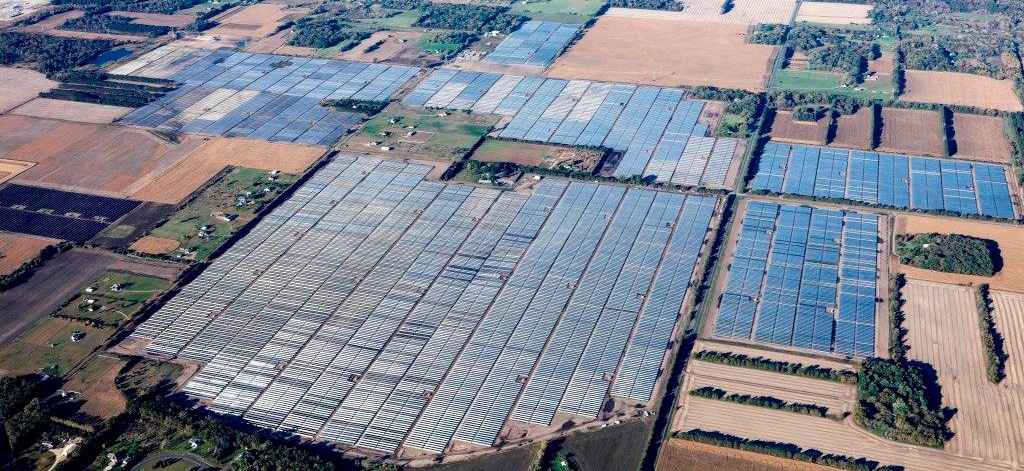Xcel Energy’s proposals for its upcoming integrated resource plan made headlines today for the announcement that the company will shutter its last two coal-fired power plants in the Upper Midwest.
That’s the headline that the utility put in its press release, and that it wanted to broadcast. Another detail in the deal that Xcel Minnesota reached with a consortium of labor and environmental groups and that is a proud centerpoint of the Upper Midwest Energy Plan is a commitment to build 3 GW of solar by 2030 – or roughly 300 MW annually.
This along with a build-out of 1.85 GW of wind will mean that more than 30% of the power used by Xcel customers in the Upper Midwest will come from wind, and with the new solar more than 50% of the electricity it sells to customers will come from renewable energy – which is a higher portion than is required by all but a few state-level renewable energy mandates.
But buried in the agreement is a detail that Xcel is not broadcasting – that it wants to own most of the solar that it is promising. Specifically, point 8 of the 12-point agreement spells out that labor, environmental and “clean energy organizations” (CEOs) will not get in the way of plans to own 50% of more of this solar:
The CEOs, Sierra Club, Center for Energy and Environment, and LIUNA Minnesota agree to support company ownership for at least 50% of new solar resources contemplated by paragraph 7 above, and Company ownership of renewable resources subject to an existing PPA, provided the company can demonstrate that its ownership will result in customer benefits including consideration of environmental impacts including Commission-approved environmental costs
Point 9 goes into more detail about how this will work, and describes a process whereby Xcel will issue a request for proposals (RFP) under the jurisdiction of Minnesota regulators, and then can “propose to build and own resources provided that the utility’s proposal is cost-effective and competitive compared to the prior RFP”.
Extending the monopoly to solar
It is not unusual for forward-thinking utilities to build and own large-scale solar in the year 2019. Led by Florida Power and Light, which has built hundreds of megawatts of solar already and is planning to install more than 10 GW of solar by 2030, pretty much every investor-owned utility in Florida is building large solar projects – including Disney’s semi-public utility.
However, Florida is a “regulated” power market where utilities are mostly the only game in town in terms of owning generation, and is not part of a competitive power market like the Midcontinent System Operator (MISO), which oversees the wholesale power market in Minnesota and other parts of the Midwest.
Along these lines, a key component of the agreement reached with environmental groups is getting these groups to support Xcel’s pending acquisition of the Mankato Energy Center, a 375 MW natural gas plant owned by Southern Company, to which a second 345 MW unit is currently nearly completed.
As such, the move by Xcel is more aggressive in terms of using the transition to renewable energy to extend its monopoly beyond simply dominating retail sales into owning more of the generation that serves its customers. As we’ve stated before, Xcel Energy has put out bold plans to decarbonize – but like all utilities, Xcel wants to do so on its terms.
Approval still needed
There are a number of other components of the compromise, such as a minimum amount of energy efficiency that Xcel will pursue, and commitments to prioritize projects that use local labor and participation in apprenticeship programs, no doubt to appease the Laborers Union (LIUNA).
Additionally, Xcel says that as part of the Upper Midwest Energy Plan it wants to run its Monticello nuclear plant to “at least 2040”, at which time it would be 69 years old – older than any nuclear power plant currently operating in the United States.
Xcel still has to get Minnesota regulators to approve all of this, and says that it will formally file its plan with Minnesota Public Service Commission on July 1, 2019.
This content is protected by copyright and may not be reused. If you want to cooperate with us and would like to reuse some of our content, please contact: editors@pv-magazine.com.









By submitting this form you agree to pv magazine using your data for the purposes of publishing your comment.
Your personal data will only be disclosed or otherwise transmitted to third parties for the purposes of spam filtering or if this is necessary for technical maintenance of the website. Any other transfer to third parties will not take place unless this is justified on the basis of applicable data protection regulations or if pv magazine is legally obliged to do so.
You may revoke this consent at any time with effect for the future, in which case your personal data will be deleted immediately. Otherwise, your data will be deleted if pv magazine has processed your request or the purpose of data storage is fulfilled.
Further information on data privacy can be found in our Data Protection Policy.